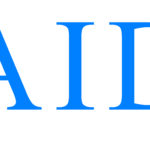…has in the last 18 months failed to conduct a single diagnostic test for hemophilia because of having obsolete equipment and lacking reagents
THE University Teaching Hospital (UTH) has not conducted a single diagnostic test for hemophilia in the last 18 months due to a lack of reagents and obsolete equipment, health experts have disclosed.
Hemophilia is a rare genetic bleeding disorder in which the blood doesn’t clot properly due to a deficiency or dysfunction of certain clotting factors. This can lead to excessive bleeding, both externally and internally, even from minor injuries.
Its symptoms include: prolonged bleeding from cuts or injuries, frequent nosebleeds, easy bruising, joint and muscle bleeding (causing swelling and pain) and blood in urine or stool.
The experts says that while UTH has some of the best medical doctors, their ability to deliver the best medical services is being frustrated by the lack of reagents and the obsolete equipment and the World Federation of Hemophilia (WFH) is now deeply cases with bleeding disorders, which cannot be diagnosed.
This shortage of reagents coupled with obsolete equipment has resulted in significant diagnosis challenges for patients with bleeding disorders.
Dr. Assad Haffar, Medical and Humanitarian Aid Director at WFH, has expressed concern about the desperate situation during an exclusive interview at the Hemophilia Symposium held in Lusaka.
Despite acknowledging Zambia’s committed, educated, and experienced health professionals in treating hemophilia, Dr. Haffar emphasised the need for necessary resources to effectively carry out their mission.
Dr. Haffar visited both the Children’s and Adult labs at UTH to understand the impact of the donations by WFH and observed that the equipment was not only outdated but also obsolete while the reagents needed for diagnosis were unavailable.
“However, what I noticed is the lack of resources. When I visited the labs, at the children’s hospital and adult hospital, they do not have the reagents to do the diagnosis, and the machines to do this are quiet old. I don’t think that these machines are capable now of doing the required diagnostic tests. I am sure the calibrations is not correct. So whatever results we get from them even with the availability of reagents are going to be 100 percent correct,” Dr Haffar said.
As a temporary solution, Dr Haffar said WFH would provide reagents to resume testing, which was expected to start next week, stressing the need for a long-term solution to ensure a steady supply of reagents and equipment maintenance.
“We had a discussion with the professionals responsible at the lab, and they told us that they use the water bath as an alternative,” Dr. Haffar explained. “A water bath can be used in place of a complicated machine to start the diagnosis. We agreed with them that we are going to provide them with some reagents to resume the testing which they used to do in the past.
Dr. Haffar noted that the lack of reagents has resulted in no diagnostic tests being conducted for hemophilia patients in the last 18 months.
“That is something we need to look at and improve in order to continue the development of hemophilia care in Zambia,” he emphasised.
WFH plans to provide additional support, including lab training and virtual training for healthcare professionals.
“We are going to conduct more lab training, virtual training for the people in Lusaka, Chinsali, and other parts. We are also going to do virtual training for professionals that deal with patients immediately who include lab technicians, clinicians, and in the future extend this to physiotherapists and nurses,” he said.
Consultant Physician and Haemato-Oncologist Dr. Charles Mwandama, Head of the Internal Medicine Department at UTH, during a presentation acknowledged the challenges in diagnosing bleeding disorders due to equipment and reagent shortages.
He noted that disorders like von Willebrand disease (VWD) required multiple tests, which cannot be performed due to diagnosis challenges.
According to Dr. Mwandama, the national record at UTH showed 310 registered patients with hemophilia, but the estimated number of patients with hemophilia A and B in Zambia is 3,420 and 760, respectively, totaling 4,180 patients.
He highlighted other challenges, including stockouts of factor VIII and IX replacements, lack of monitoring lab capacity, and limited treatment options for VWD.
Prophylactic factor VIII (FVIII) has dramatically improved hemophilia A treatment, preventing joint bleeding and halting the deterioration of joint status. However, Dr. Mwandama emphasized the need for improved access to treatment options and diagnostic testing.
The Hemophilia Symposium attracted over 150 participants, including health professionals and individuals with lived experiences of hemophilia.
The event aimed to raise awareness and discuss challenges in hemophilia care in Zambia.
Dr. Haffar commended healthcare professionals for their efforts in improving hemophilia care. However, he stressed the need for continued support and resources to address the ongoing challenges.
“We need to work together to improve the situation, We are committed to supporting Zambia in improving hemophilia care, and we look forward to continuing our collaboration.”
‘UTH in reagents blues’









